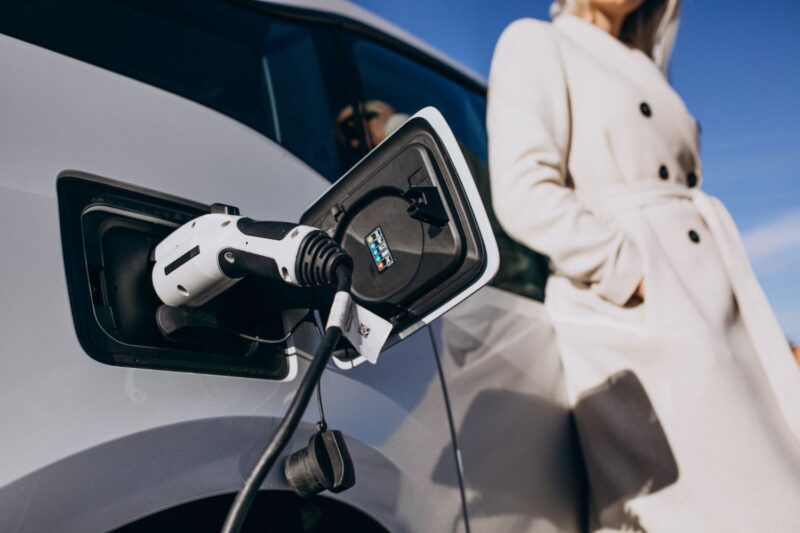The Australian government is considering the introduction of a road user charge for electric vehicles, starting with a trial on heavy vehicles before extending the charge to all cars. The road user charge would replace the fuel excise that petrol and diesel cars currently bear.
This follows the Productivity Commission’s recent recommendation to the government to phase out the exemption of electric vehicles from the fringe benefits tax.
While balancing a post-pandemic budget with an ageing population is no easy task, both these moves could kneecap the growth of electric vehicles just as they are emerging as a viable alternative to petrol and diesel cars.
Relative to other advanced economies, Australia’s uptake of light electric vehicles is slow. The latest Australian Automobile Association figures show that electric vehicle sales accounted for just under 10 per cent of all new car sales from April to June 30.
Australians are still purchasing internal combustion engines in high numbers. In the April-June quarter, Australians purchased 226,306 internal combustion vehicles and 29,244 battery electric vehicles by contrast.
While these battery electric car sales might represent record numbers for Australia, we are lagging well behind other advanced economies. At the other extreme to Australia is Norway, which is close to achieving its government target of 100% electric vehicle new car sales in 2025.
In between Norway and Australia, sit the likes of the United Kingdom, France, Germany, the Netherlands and China. In the Netherlands, fully electric vehicles accounted for 34.7% of new car registrations in 2024. In the UK electric cars have made up 21.6% of all sales so far in 2025.
In China, the leading manufacturer of low-cost cars and batteries, electric car sales are projected to reach 60% of total car sales in 2025.
What these countries have in common is the use of clear and consistent government policies to incentivise the transition from petrol and diesel to electric cars, at both the manufacturing and consumer ends – with a further layer of carbon reduction mandates in European Union countries.
Norway’s success is due to a mix of regulations, fiscal incentives, subsidies and other on-road subsidies in cities like Bergen and Oslo. In the UK, consumers are eligible for an electric car grant as well as salary sacrificing while manufacturers are subject to the Zero Emission Vehicle Mandate, requiring them to sell a certain percentage of electric vehicles each year.
In the Netherlands, consumers used to receive a 75% discount on their motor vehicle tax plus registration discounts (prior to their recent phase-out).
While not all countries have Norway’s sovereign wealth fund from its plentiful oil reserves to fund fiscal incentives, Norway showed that non-fiscal incentives also work. Drivers of light electric vehicles in Norway have enjoyed reduced toll, parking and bus lane privileges in addition to initial incentives for upfront vehicle purchases.
In times of transition, governments play a critical role in changing behaviour and the link between policy support and electric vehicle adoption is clear. Electric car sales slowed in major car markets (including the Netherlands, Germany and France) in 2024 when policy support waned, according to the International Energy Agency.
If there is a problem with the approach in Australia, it is the variable, ad hoc, fragmented and overlapping policies across Federal and states and territory policies. Change of consumer behaviour requires clear and consistent policies.
With transport Australia’s third largest source of greenhouse gas emissions, it is a sector that needs to change quickly. Australia committed to e-mobility as part of the Paris Agreement, and supporting a transition to e-mobility needs to be a key part of the government’s net zero strategy.
Low-cost Chinese electric vehicle imports alone will not be enough to incentivise new electric purchases. Drivers still hold range anxiety about charging facilities, which must develop in concert with electric vehicle adoption. For charge-point operators to invest, they need certainty about the future growth of electric cars.
While electric cars are not net zero utopia, due to their environmental and mining impact and the pressure they place on an evolving electricity system, they are a way of reducing emissions relatively quickly as part of an already challenging net zero transformation.
They can also give back to the energy system through bi-directional charging. Complemented with a transition to e-mobility more broadly, including public transport, they can contribute to the 72% global transport reduction needed by 2037, according to the International Panel on Climate Change, to meet the 1.5 degree emissions reduction target.
Decarbonisation to meet net zero targets is already an uphill battle. The government needs a better electric vehicles plan, coordinated with states and local councils. It would do well to look at what has worked overseas.
Antara Mascarenhas has 20 years’ experience in energy policy and reform and held a number of senior roles at the Australian Energy Market Operator, including GM of Stakeholder Engagement and GM of Entity Establishment at ASL, where she played a lead role in setting up ASL as the NSW Consumer Trustee. Antara is currently a Visiting Fellow at the European University Institute in Florence, Italy.


